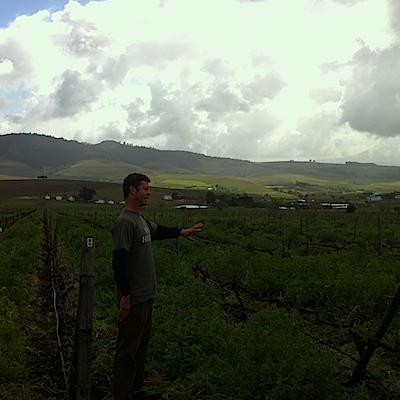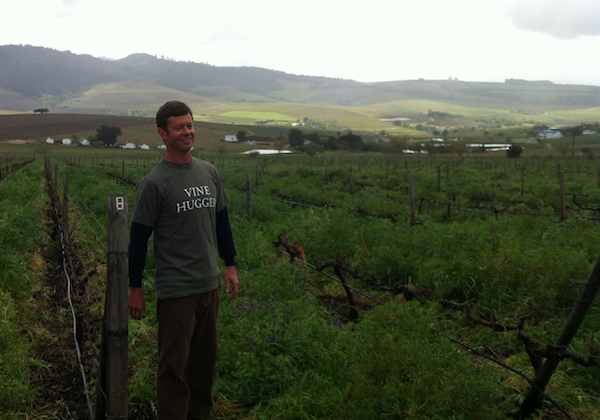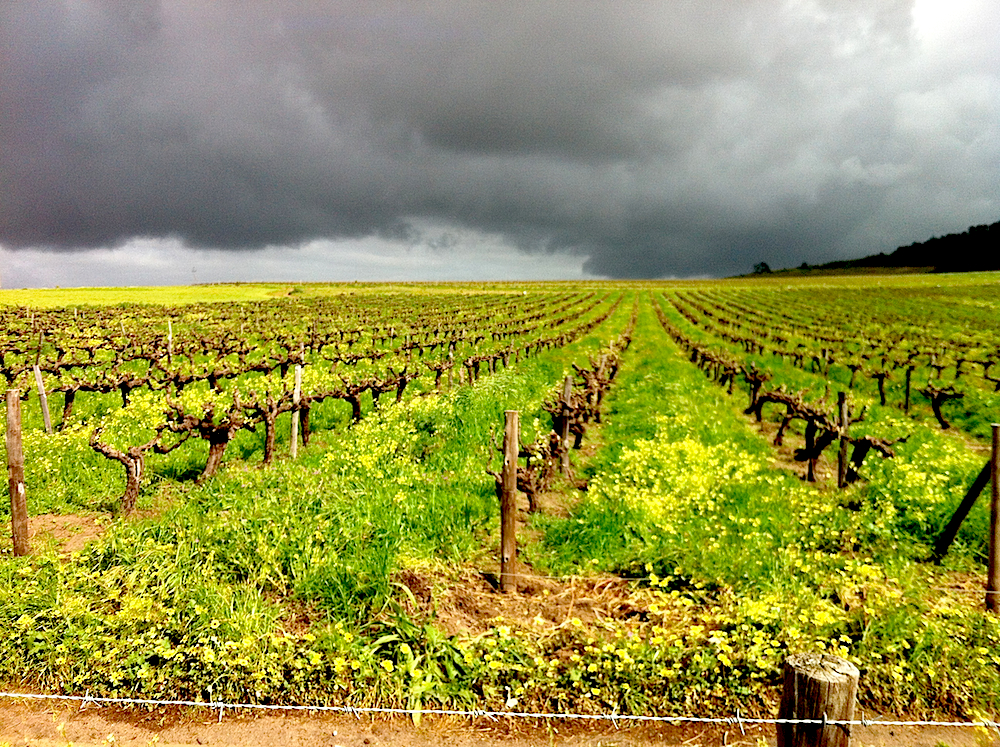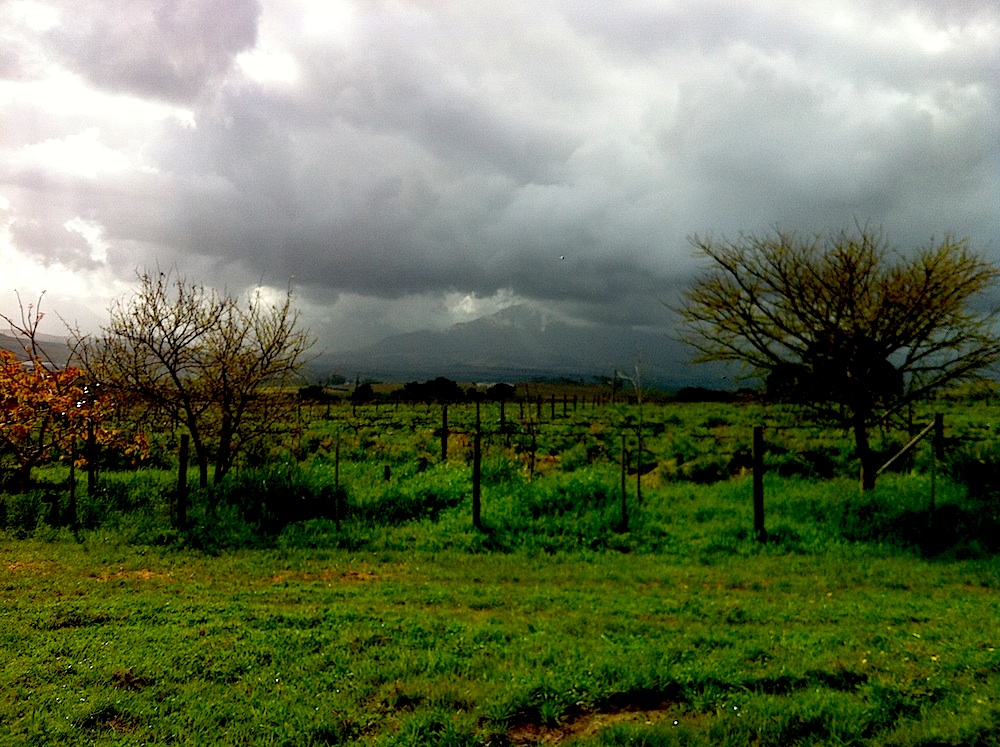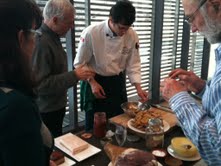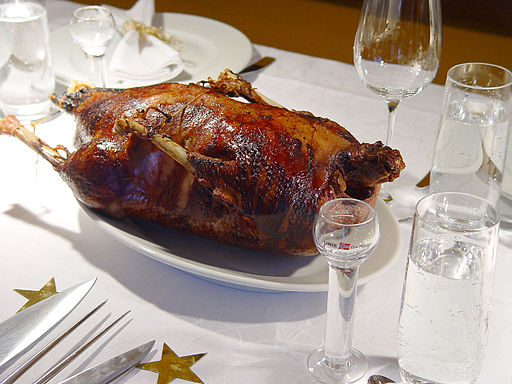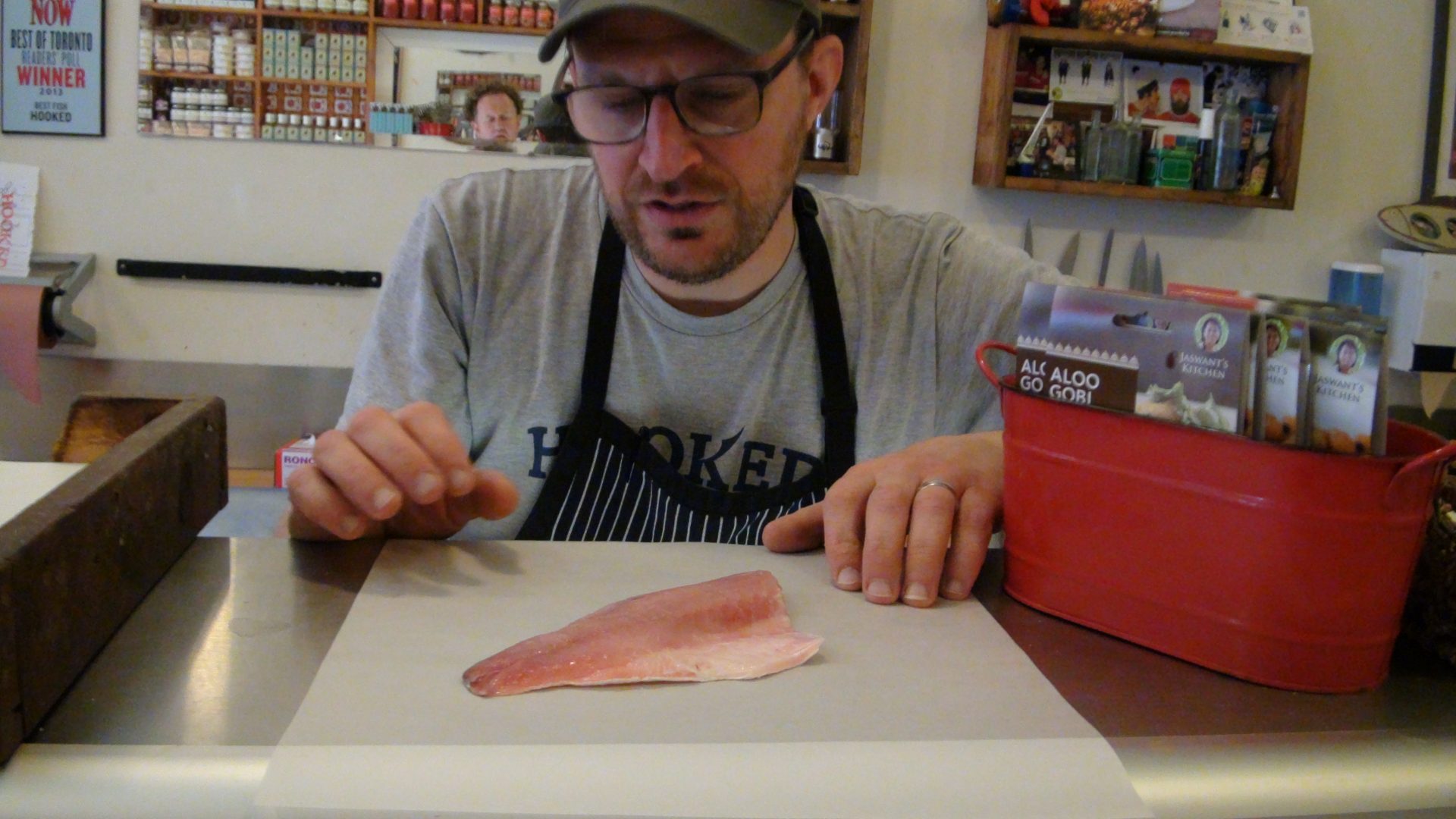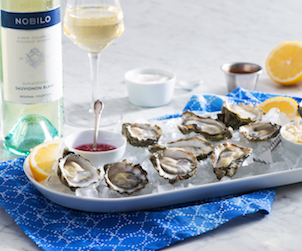I wasn’t prepared for the stunning beauty of the Cape wine lands. Nor was I prepared for the cool, early spring weather in the middle of September when I visited Johan Reyneke at his farm, Uitzicht, in the Stellenbosch. The rolling low ceiling of clouds coming up off the South Atlantic, which were punctuated by bright spots of sunshine, made the scenery all the more dramatic, occasionally exposing the mountains to the north and making oscillating patterns of light over Reyneke’s vineyards, which burst green from winter cover crops planted between the rows.
A lot of the wineries in South Africa call themselves “farms”, even when they include very fancy restaurants, hotels, spas and any other manner of luxury experience, but Johan Reyneke’s property, where he grows mostly Chenin Blanc and Syrah, fits the description as pulled from a story book. Beyond a simply furnished tasting room, Uitzicht is clearly his family’s home and a working farm, where chickens, ducks, cows, a compost heap, tractors, kids’ toys and everything else share space with his vines.
I was part of a contingent of about 20 wine writers and importers from across North America, Northern Europe, China and Japan in the country for the Cape Wine 2012 conference, and we had been taken to Reyneke as part of a tour of organic and bio-dynamic wineries to demonstrate Wines of South Africa’s industry-wide commitment to environmental sustainability. Johan Reyneke’s story, in which he has moved over the last dozen or so years from conventional to organic to bio-dynamic farming and wine making, provided us with both a “best practices” model and a kind of meta-narrative as Reyneke’s understanding of how his farm and wines fit into his natural surroundings changed and evolved along with his generation’s and the industry in general.
I interviewed Reyneke in Toronto last year, and remembered him as thoroughly charming, which he was. As we toured the field, and then tasted some of his wines, he made a reasoned and results-based argument for bio-dynamic farming, stating he could measure the improved health of his soil and explaining that it made good business sense to him, since he didn’t have to buy any “inputs” like fertilizer or pesticides, relying on his cover crops, worm farm (he raises them in old wine barrels), ducks (they eat slugs) and cows to produce everything he needs to sustain his farm. In a dramatic point of demonstartion, he asked us if we could tell where his farm ended and others began. The contrast was striking between Uitzicht’s green rows of vines and the brown, arid ones of his conventionally farmed neighbours.
Reyneke retold his life story of how as a long-haired philosophy student at Stellenbosch university during the apartheid regime the only job open to him with his long locks was working in the vineyards alongside black labourers. Needless to say, he fell in love with working on the land, and making wine, enough to put aside an academic career. But as he worked his way to becoming a winemaker, eventually inheriting Uitzicht, he also never forgot his roots and what it was like to labour in the fields.
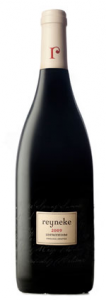 In South Africa, black farm labourers typically live on the farms they work. Reyneke’s Cornerstone range of wines is his way of recognizing what he sees as his workers’ essential contribution to his success. The profits from sales of the wine go directly to a fund which benefits his workers, and the proceeds have been used to help workers’ families buy their own property off the farm and pay the college and university tuition of their children. Reyneke describes the philosophy of the label as “quality with integrity”.
In South Africa, black farm labourers typically live on the farms they work. Reyneke’s Cornerstone range of wines is his way of recognizing what he sees as his workers’ essential contribution to his success. The profits from sales of the wine go directly to a fund which benefits his workers, and the proceeds have been used to help workers’ families buy their own property off the farm and pay the college and university tuition of their children. Reyneke describes the philosophy of the label as “quality with integrity”.
The 2009 Reyneke Cornerstone ($25.95, LCBO# 278697) is available in Ontario in Vintages stores now. It’s more expensive and reserved than the typical South African red, and made with sourced organic Cabernet Sauvignon, Syrah and Merlot. The tannins are still quite pronounced, and it could do with some further aging, I think, but it opened early and/or decanted it’s a great example of the new kind of wine making going on in South Africa, where plush flavours are giving way to leaner, more food-friendly ones. In this case, cassis and dark fruit from the Cabernet Sauvignon is balanced by dustier, garrigue-like notes form the Shiraz. There is also a pleasant hint of bitterness which balances the fruit well. A rather sophisticated, but honest wine that matches its maker.
 Malcolm Jolley is a founding editor of Good Food Revolution and Executive Director of Good Food Media, the not-for-profit corporation which publishes it. Follow him at twitter.com/malcolmjolley
Malcolm Jolley is a founding editor of Good Food Revolution and Executive Director of Good Food Media, the not-for-profit corporation which publishes it. Follow him at twitter.com/malcolmjolley

